Templo Zhongyue, Dengfeng - Entradas, horarios, ubicación y lugares de interés
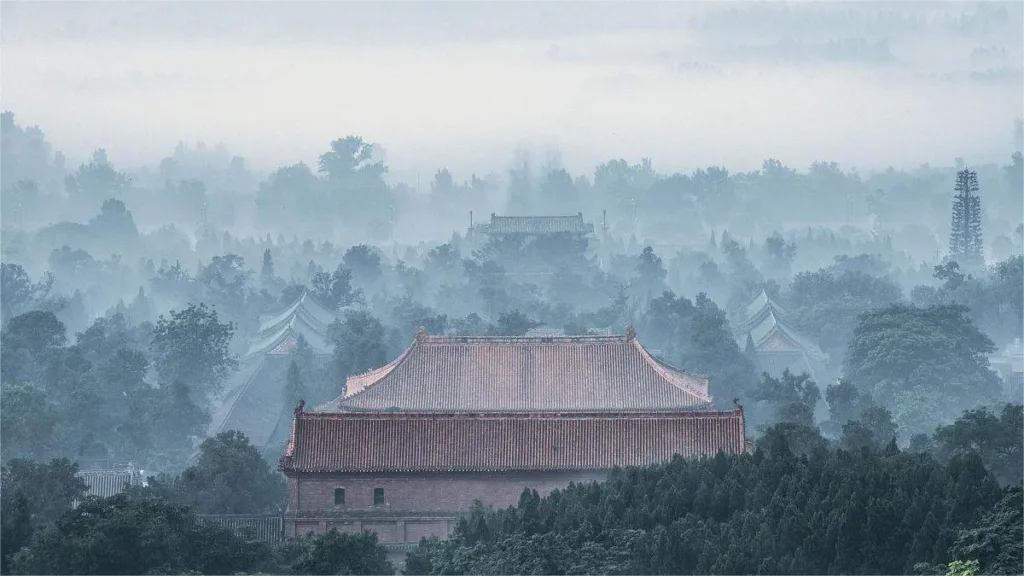
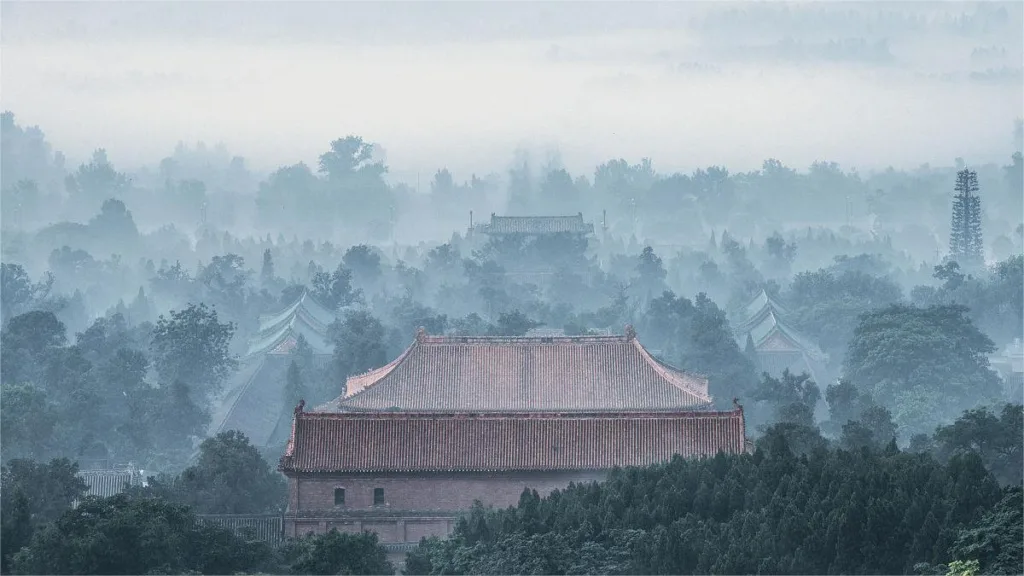
Zhongyue Temple (中岳庙), situated at the southern foot of Mount Song in Dengfeng, was originally constructed during the Qin Dynasty (221–207 BC). It serves as a place of worship for the mountain god of Taishi Mountain and is considered the crown of Central Plains temples. Among the Five Sacred Mountains of China, Zhongyue Temple, covering an area of nearly 110,000 square meters, boasts the largest and most well-preserved ancient architectural complex.
The architectural style and layout of Zhongyue Temple were modeled after the Forbidden City in Beijing, designed and rebuilt during the reign of Emperor Hongli of the Qing Dynasty, earning it the nickname “Little Forbidden City.” Oriented north to south and featuring structures arranged from higher to lower elevation, the temple’s central axis stretches 650 meters and comprises seven main halls and eleven layers of buildings. These buildings, majestic in size, include temples, palaces, pavilions, and towers, totaling 39 structures and nearly 400 rooms. Within the temple grounds, visitors can also find 73 ancient inscriptions and over 330 ancient cypress trees dating from the Han to Qing dynasties.
Índice
- Información básica
- Ubicación y transporte
- Highlights of Zhongyue Temple
- Vlog about Zhongyue Temple
- Other Attractions in Taishi Mountain
Información básica
| Duración estimada de la visita | 2 horas |
| Precio del billete | 30 RMB |
| Combined Ticket for Mount Song | 80 RMB including Zhongyue Temple Luya Waterfall, and Star Observation Platform |
| Número de teléfono | 0086-0371-62850819 0086-0371-62745000 |
Ubicación y transporte
Located at the southern foot of Mount Song in Dengfeng City, Zhengzhou, Henan Province, Zhongyue Temple is situated with Huanggai Peak to its back, facing Yuanan Mountain, with Wangchao Ridge to the west and Muzigang to the east. To get there, you can take either bus 2 or 10 and alight at Zhongyue Temple Station.
Highlights of Zhongyue Temple
Tianzhong Pavilion
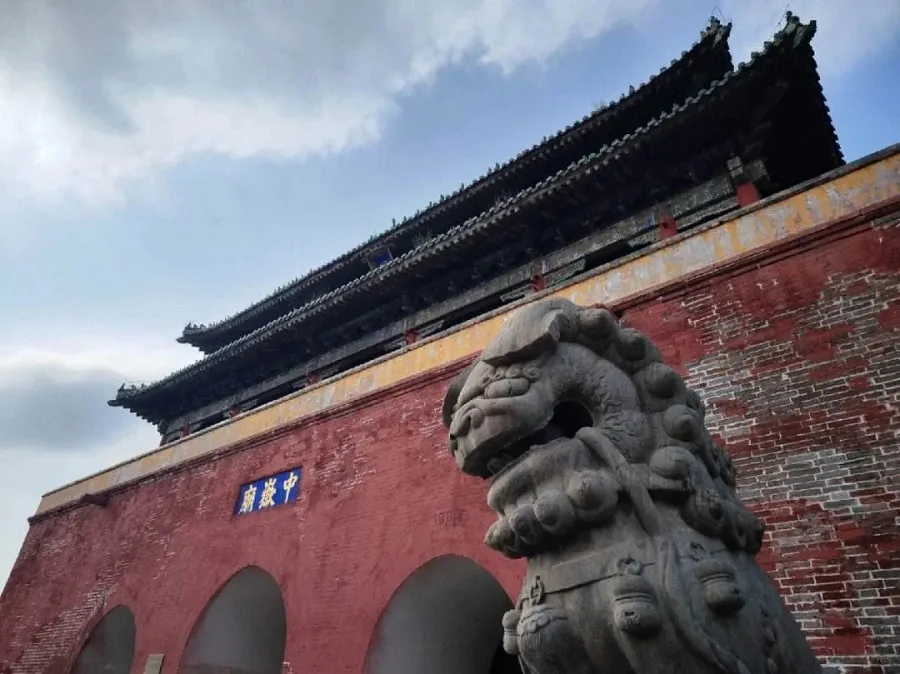
During the Ming and Qing dynasties, Tianzhong Pavilion (天中阁) served as the main entrance of Zhongyue Temple. Originally named Huangzhong Tower, it was renamed Tianzhong Pavilion during the reign of Emperor Jiajing (1522–1566). The pavilion features double-eaved roofs with green tiles, adorned with carved beams and painted pillars, and projecting eaves that soar into the sky. The entrance of Tianzhong Pavilion is secured by large tiger-head nails, with two stone lions guarding the gate, finely sculpted artworks from the Qing Dynasty. The eastern lion holds a stone ball with a diameter of 15 centimeters in its mouth, while the western lion has a small cub beneath its front paw, showcasing exquisite craftsmanship. Behind the stone lions is a high platform structure with three arched doorways. Standing over 7 meters tall, the platform supports a five-bay, single-depth building with double-eaved gable roofs, covered in green glazed tiles.
Chongsheng Gate

Chongsheng Gate (崇圣门) derives its name from the mountain god of Mount Song, who was honored as the “Zhongyue Chongsheng Great Emperor.” To the east of Chongsheng Gate lies the Ancient God Treasury, established during the Northern Song Dynasty. Surrounding the treasury are four towering iron men, cast during the reign of Emperor Yingzong of the Northern Song Dynasty (1064). Standing approximately 3 meters tall and weighing around 3 tons each, these iron guardians are depicted with clenched fists, raised arms, and stern gazes, exuding an imposing presence. They are the largest and best-preserved “guardian iron men” from the Northern Song Dynasty and serve as artistic representatives of that era.
Junji Gate
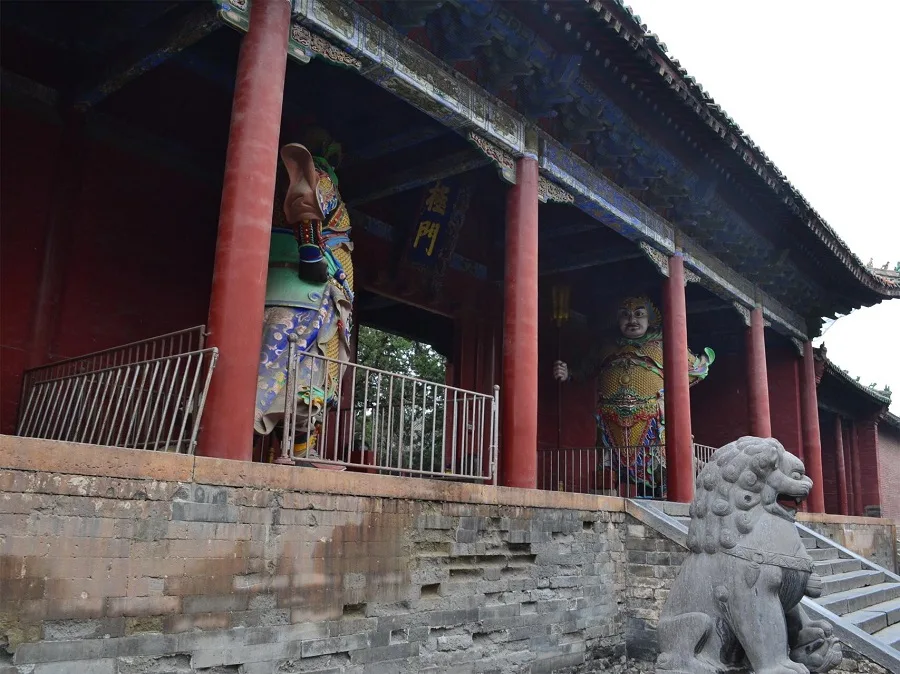
Junji Gate (峻极门), also known as the “General’s Gate” due to the statues of two generals on both sides of the central gate, serves as the mountain gate of the central courtyard of Zhongyue Temple. Originally built during the Jin Dynasty, it was destroyed by a fire during the Ming Dynasty and later rebuilt during the Qing Dynasty. Junji Gate, together with the surrounding corridors and halls, forms a quadrangle layout. Near Junji Gate, numerous precious cultural relics can be found, including Wei Steles, Tang Pottery, Song Steles, Golden Lions, and Temple Sturdy, among others. Inside the four corner pavilions to the east of Junji Gate is the “Zhongyue Song Gao Ling Temple Stele,” carved in the second year of Tai’an during the Northern Wei Dynasty (456 AD). It is the oldest stone stele in the Mount Song area, standing at 2.82 meters tall, carved from a single stone.
Junji Hall

Junji Hall (峻极殿) is the main hall of Zhongyue Temple and the largest building on Mount Song. The hall spans nine bays in width and five bays in depth, covering an area of 920 square meters. In front of Junji Hall, there is a 3-meter-high terrace surrounded by stone railings, with three stone steps at the front. The central staircase is adorned with exquisite patterns, including a “Solitary Dragon Crouching,” “Twin Dragons Playing with a Pearl” in the middle, and “Flocks of Cranes Playing in the Lotus” below.
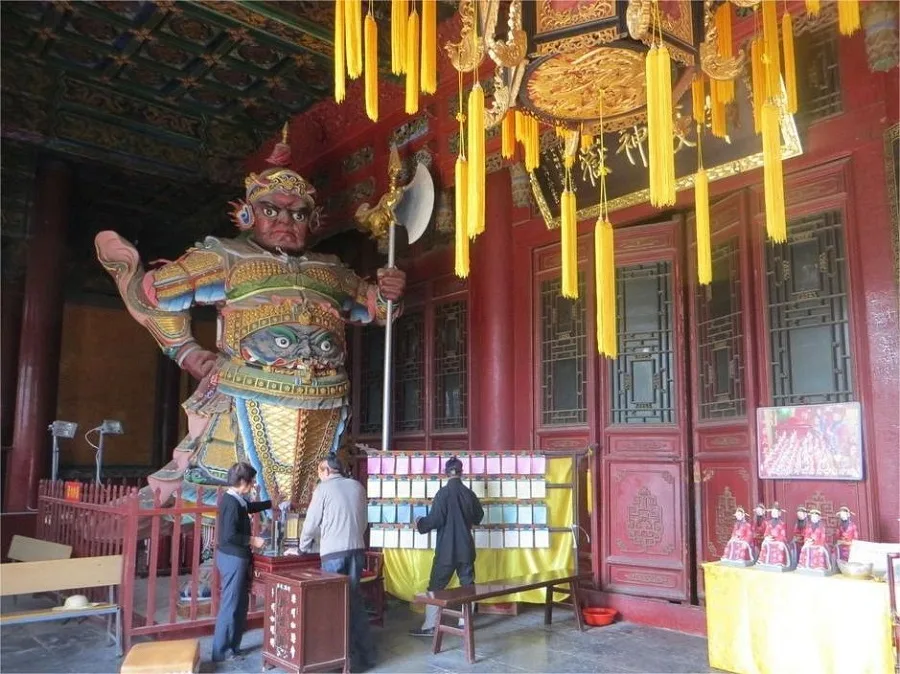
Inside Junji Hall, the central altar is dedicated to the Chongsheng Great Emperor Zhongtian Wang, with envoys, attendants, and generals such as Fangbi and Fangxiang on the sides. Displayed in the hall are bronze incense burners, censers, wax tablets bestowed by Emperor Qianlong of the Qing Dynasty, as well as an iron bell and a drum from the Ming Dynasty. The clay sculpture of the Zhendian General, standing at an imposing 6 meters tall, is the largest clay sculpture in the Mount Song. Hanging from the wooden frame at the east corner of the hall is an iron bell cast in the first year of the Wanli reign (1573) of the Ming Dynasty.
The painted ceiling of Junji Hall features a coffered ceiling, intricately crafted with delicate miniature arches stacked layer upon layer. In the center of the coffered ceiling resides a coiled dragon, with its mouth originally holding a pearl, referred to by locals as the “Old Dragon Coiling Nest,” representing a precious artistic treasure. The carving craftsmanship of the coffered ceiling is exquisite, with dragons swirling and raising their heads amidst the intricate patterns.
Vlog about Zhongyue Temple
Other Attractions in Taishi Mountain

Academia Songyang
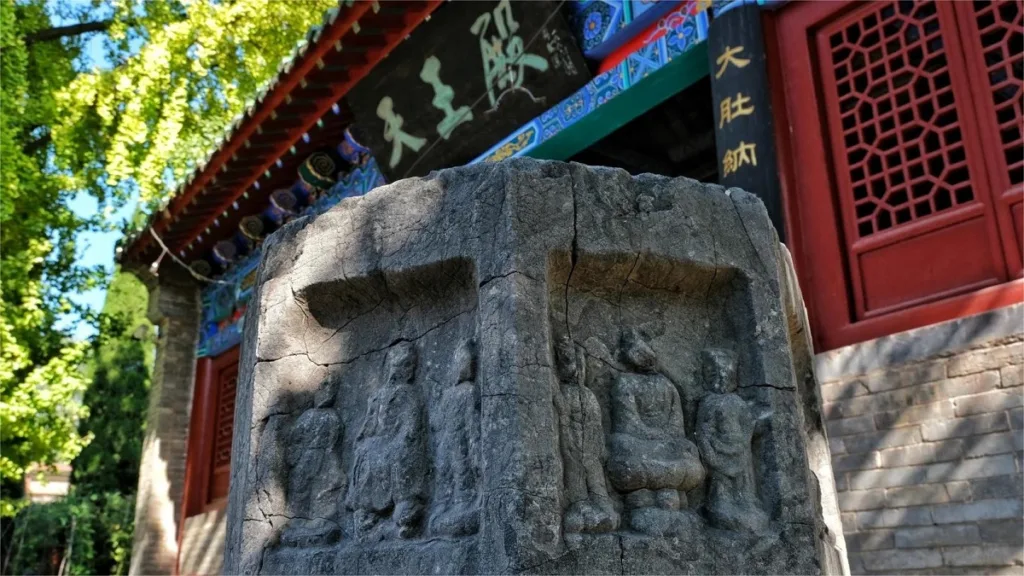
Yongtai Monastery
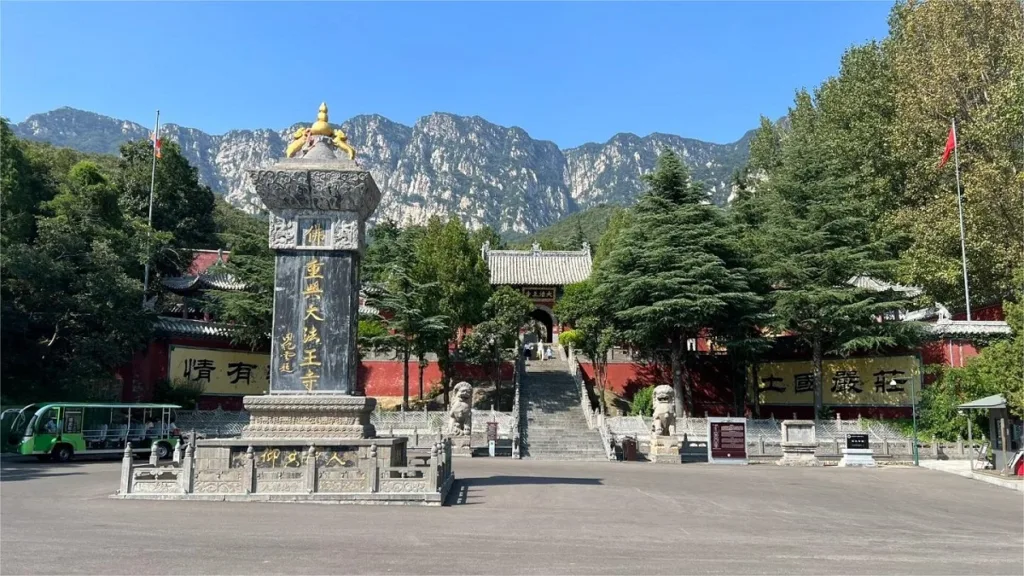
Fawang Temple

Huishan Temple
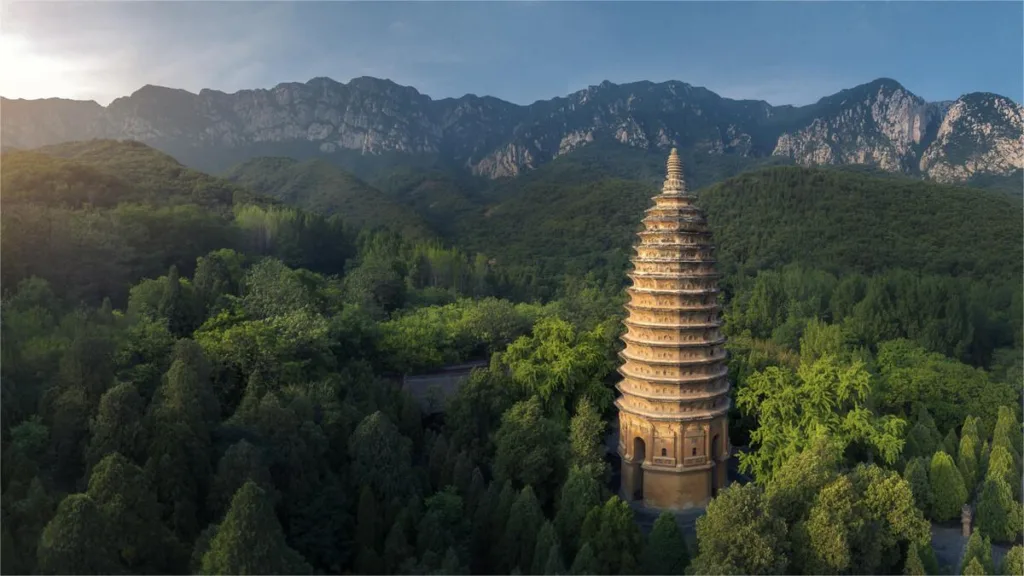
Songyue Temple and Songyue Pagoda
Lugares históricos de Henan, Atracciones de Zhengzhou